Tamarack Tree
- November 12, 2024
- 0 comment
The Tamarack Tree (Larix laricina) is an important species native to North America, known for its unique characteristics and vital role in the ecosystem. Distinguished as one of the few deciduous conifers, the Tamarack sheds its needles annually, unlike most evergreen conifers.

This tree contributes significantly to biodiversity, providing habitats for various wildlife and enhancing soil health. Its presence in boreal and subarctic forests underscores its ecological importance.
What Is a Tamarack Tree?
The Tamarack Tree belongs to the family Pinaceae and is scientifically named Larix laricina. Commonly known as the Eastern Larch or American Larch, it features needle-like leaves that turn a striking golden-yellow in the fall before shedding. The tree’s bark is thin and scaly, starting grayish-brown and becoming reddish-brown with age. This characteristic, along with its conical shape, makes the Tamarack easily identifiable.
| Characteristic | Details |
|---|---|
| Scientific Name | Larix laricina |
| Native Region | North America (Canada, Northern U.S.) |
| Foliage | Deciduous, soft green needles |
| Fall Color | Golden-yellow |
| Trunk | Straight and slender |
| Wood Durability | Durable, moderately resistant to decay |
| Wood Use | Utilized for pulp, poles, and lightweight construction |
| Resistance | Moderate resistance to pests and diseases |
| Climate Adaptability | Thrives in cold, wet climates |
| Environmental Impact | Prevents soil erosion, supports biodiversity |
| Economic Importance | Used in forestry for wood products |
| Sustainability | Recognized for eco-friendly contributions |
| Botanical Beauty of Tamarack Tree |
Tamarack Tree Characteristics:
- Needles: Soft, light green in spring and summer; golden-yellow in fall.
- Bark: Thin, flaky, and reddish-brown as it matures.
- Height: Typically reaches 15-20 meters (50-65 feet) but can grow taller under ideal conditions.
- Interesting Fact: Unlike most conifers, the Tamarack is deciduous, meaning it sheds its needles in the winter.
Three Different Types of Tamarack Tree Species
While Larix laricina is the most recognized species in North America, the genus Larix encompasses several species around the world:
Larix Sibirica (Siberian Larch)
Common in Russia, known for its hardiness.

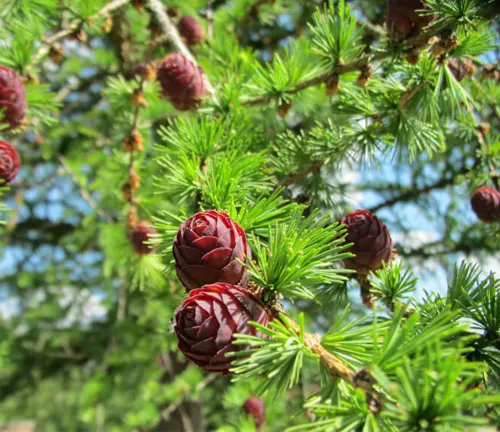
Larix Decidua (European Larch)
Found in mountainous regions across Europe.
Larix Occidentalis (Western Larch)
Native to the Pacific Northwest, valued for its strong, durable wood.
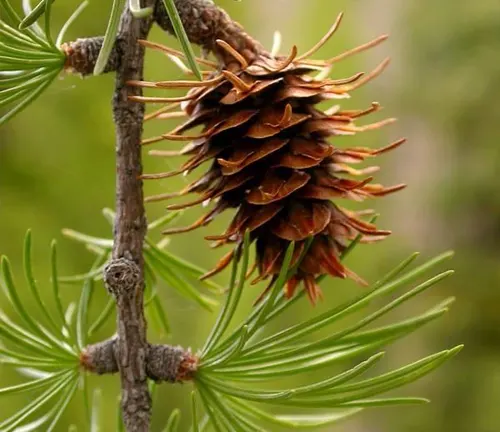
These species vary in size, needle length, and cold tolerance, adapting to different climates and serving as important components of their respective ecosystems.
Where Do Tamarack Trees Grow?
Tamarack Trees are predominantly found in the cold, northern regions of North America, such as Canada and the northern United States. They thrive in bogs, swamps, and wetland areas, preferring moist, acidic soils. Adaptable to cold climates, they are typically found in USDA Hardiness Zones 2 to 5.
Habitat Adaptation:
- Cold Climates: The Tamarack’s flexible branches and deciduous nature help it withstand freezing temperatures.
- Wetlands: Tamarack roots adapt well to soggy soils, often outcompeting other tree species in waterlogged environments.
- Ecological Role: The tree helps stabilize soil and prevents erosion while providing habitats for various birds and small mammals.
How to Grow and Care for Tamarack Trees
Cultivating a Tamarack Tree requires specific conditions to ensure healthy growth. Here’s a guide to growing and maintaining this tree:
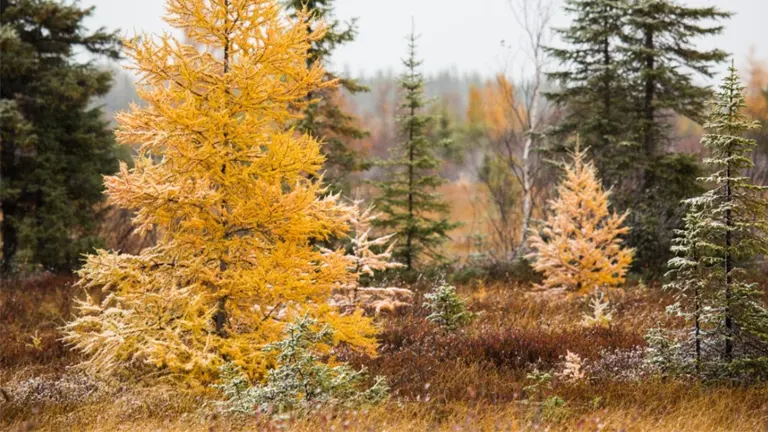
Ideal Growing Conditions, Propagation and Maintenance:
- Soil: Prefers moist, acidic soil but can adapt to drier areas if watered consistently.
- Sunlight: Full sun exposure is essential for optimal growth.
- Water: Requires ample water, particularly in its early growth stages.
- Propagation: Can be grown from seeds. Seed collection should occur in late fall, and seeds should be stratified before planting.
- Care Tips: Regular pruning helps maintain the tree’s shape and encourages healthy growth. Protect young trees from pests like larch sawflies and monitor for signs of fungal diseases.
Ecological Benefits of Tamarack Tree
The Tamarack Tree plays a pivotal role in maintaining ecological balance. Its deep roots help prevent soil erosion and improve soil quality by contributing organic material when the needles fall and decompose. This natural cycle enriches the ground, creating a nutrient-rich habitat for plants and microorganisms.
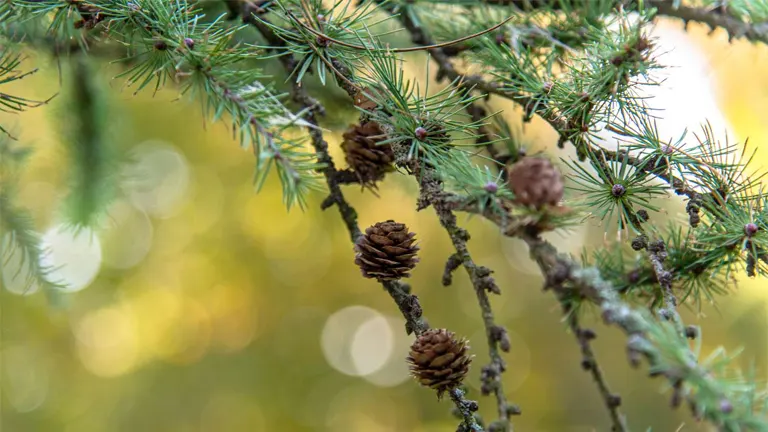
Contributions to Biodiversity:
- Habitat: Offers shelter and nesting sites for various bird species.
- Food Source: Seeds and needles provide sustenance for birds and small mammals.
- Soil Health: Enhances soil structure and promotes a thriving ecosystem in wetland areas.
Tamarack Tree Flowering and Pollination
Tamarack Trees produce small, inconspicuous flowers in the spring. The female flowers develop into small, ovoid cones that mature and release seeds in the fall. The tree’s flowering is not showy, but it plays a crucial role in its reproductive cycle.
Pollination:
- Type: Wind-pollinated.
- Wildlife Interaction: Although the tree’s flowers do not attract bees or butterflies, its role in local ecosystems is vital for maintaining wildlife diversity.
Is Tamarack Tree Drought-Tolerant?
Despite its preference for moist environments, the Tamarack Tree can exhibit moderate drought tolerance once established. Young trees, however, require regular watering, especially during prolonged dry periods.
Growing Tips for Dry Climates:
- Mulching: Helps retain soil moisture.
- Water Management: Deep, infrequent watering is recommended to promote root growth.
Tamarack Tree and Wildlife Interactions
The Tamarack Tree is integral to its environment, fostering a symbiotic relationship with wildlife. Birds, such as chickadees and crossbills, feed on its seeds, while small mammals may rely on its needles for shelter. Furthermore, the tree’s fallen needles contribute to the detritus cycle, providing nutrients to the forest floor.
Symbiotic Relationships:
- Birds: Use Tamarack branches for nesting.
- Insects: Serve as a food source for caterpillars and other leaf-feeding insects.
Final Conclusions
The Tamarack Tree (Larix laricina) is more than just a unique tree species; it is a vital part of the boreal and wetland ecosystems. From providing wildlife habitats to stabilizing soils, the Tamarack enriches its environment in many ways. Its unique deciduous nature, resilience to cold climates, and ecological benefits make it an essential component of biodiversity and conservation efforts.
Frequently Asked Questions (FAQs)
- What is a Tamarack Tree?
The Tamarack Tree, scientifically known as Larix laricina, is a deciduous conifer found in North America. It sheds its needles annually and is part of the Pinaceae family. - Where do Tamarack Trees typically grow?
Tamarack Trees thrive in cold, northern climates, especially in wetlands, bogs, and swamps throughout Canada and the northern United States. - What makes the Tamarack Tree unique?
Unlike most conifers, the Tamarack is deciduous, shedding its needles each winter after they turn golden-yellow in the fall. - How tall do Tamarack Trees grow?
They typically reach 15-20 meters (50-65 feet) but can grow taller under favorable conditions. - What wildlife benefits from Tamarack Trees?
Birds, such as chickadees and crossbills, rely on Tamarack seeds, while small mammals use the tree for shelter. - Is the Tamarack Tree drought-tolerant?
While it prefers moist conditions, established Tamarack Trees can tolerate moderate drought. - What ecological role does the Tamarack Tree play?
Tamarack Trees help prevent soil erosion, enrich soil quality with their fallen needles, and provide habitats for various wildlife. - How do you care for a Tamarack Tree in a home garden?
Ensure it receives full sun, moist, acidic soil, and regular watering. Pruning helps maintain its shape and health.
We hope this guide has shed light on the unique qualities and ecological role of the Tamarack Tree. Have any experiences or tips on growing and conserving these trees? Share below and join the discussion. Your insights can inspire others to value and protect Tamarack Trees and encourage sustainable practices. Don’t forget to share this guide with those who care about forest preservation and biodiversity.


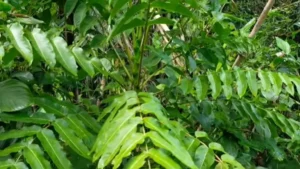
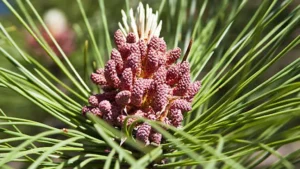
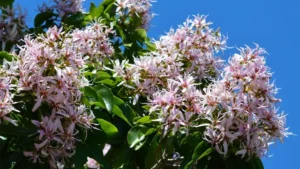
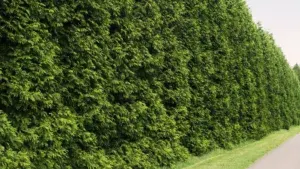

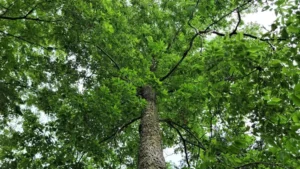

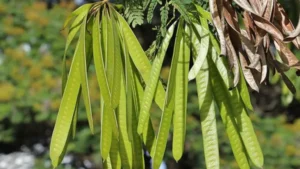

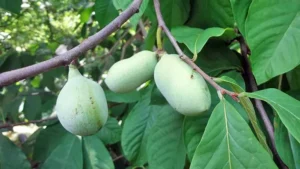

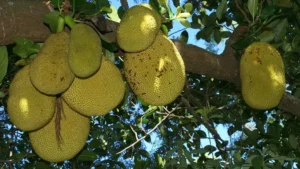
Leave your comment